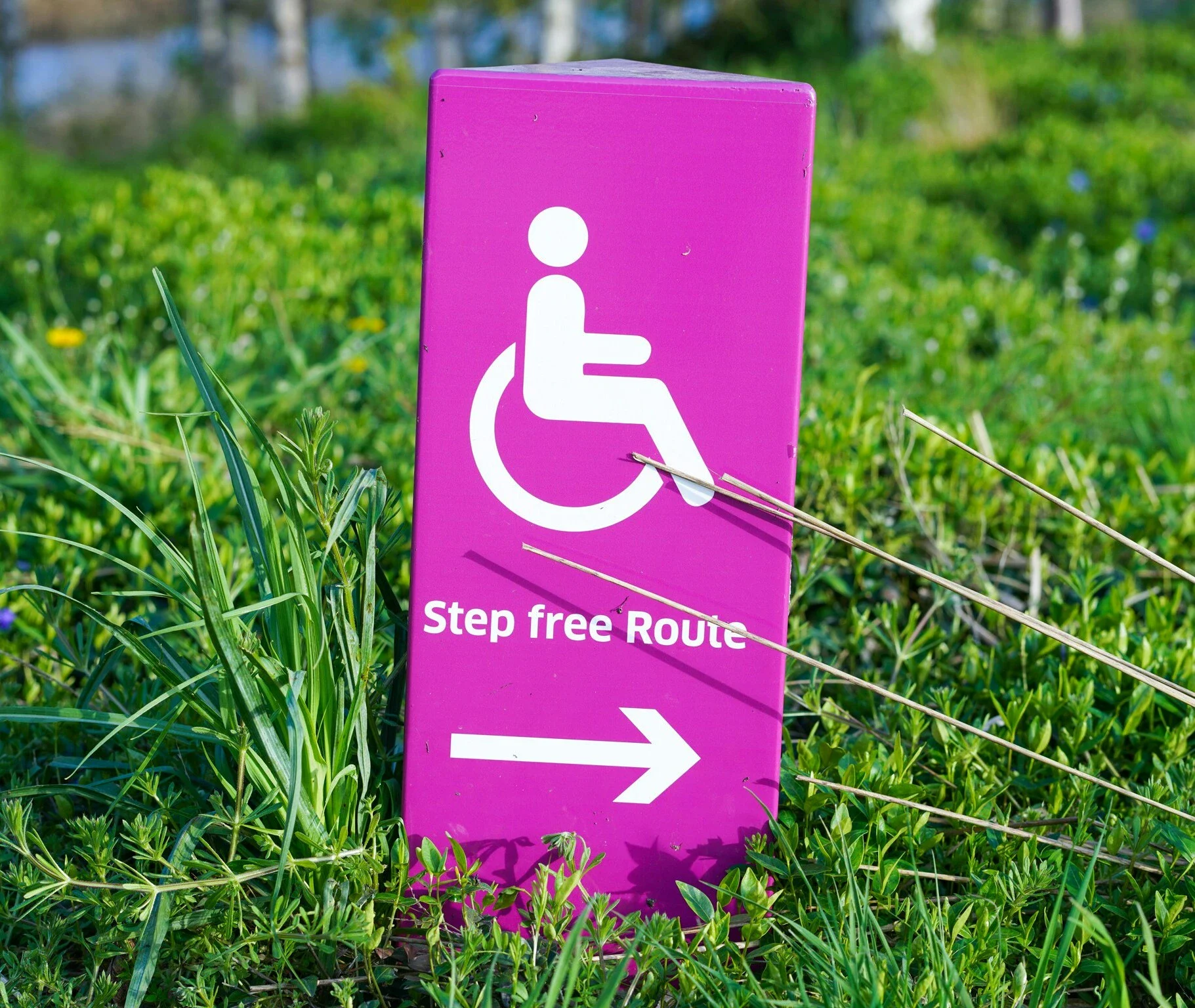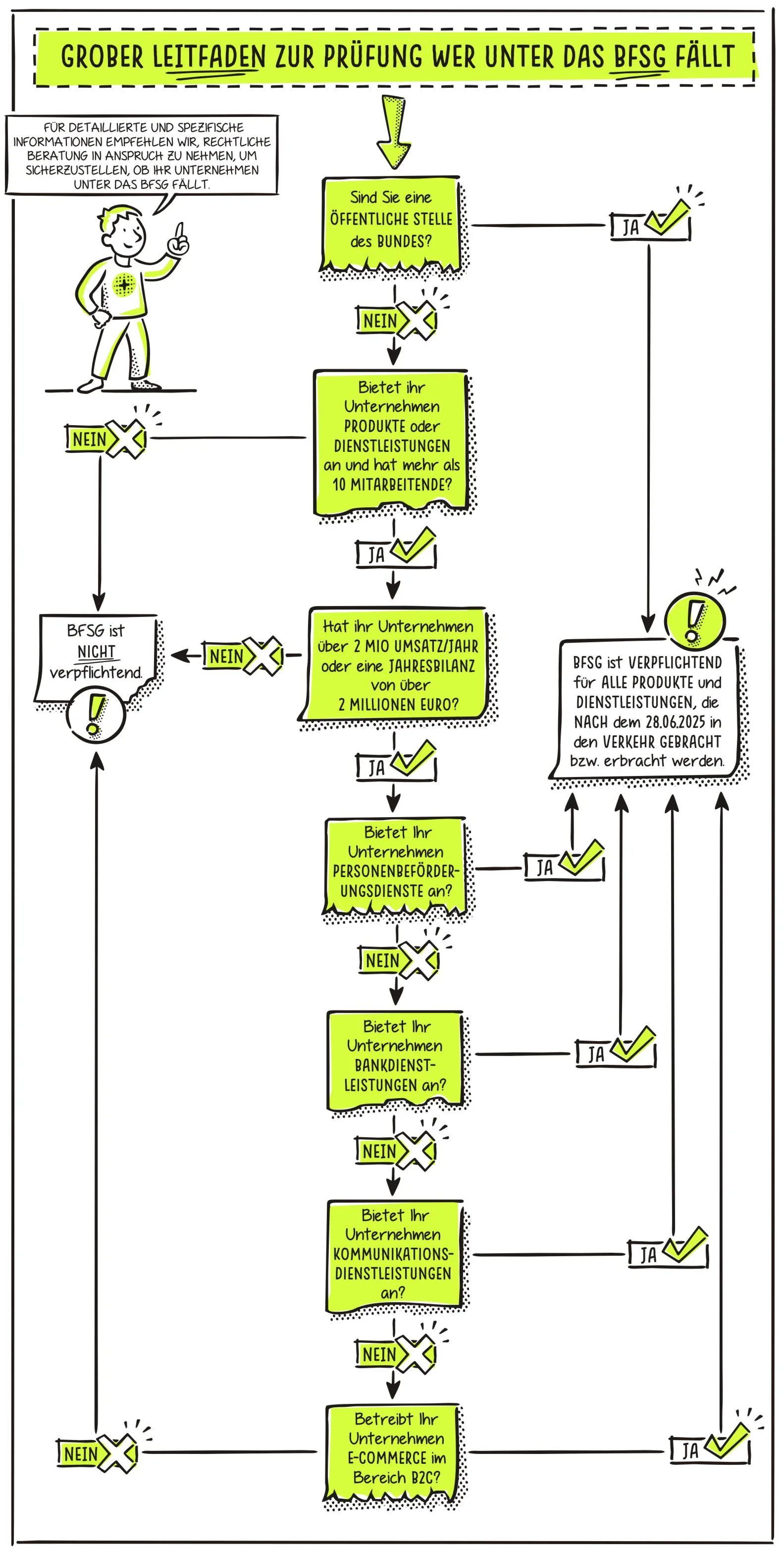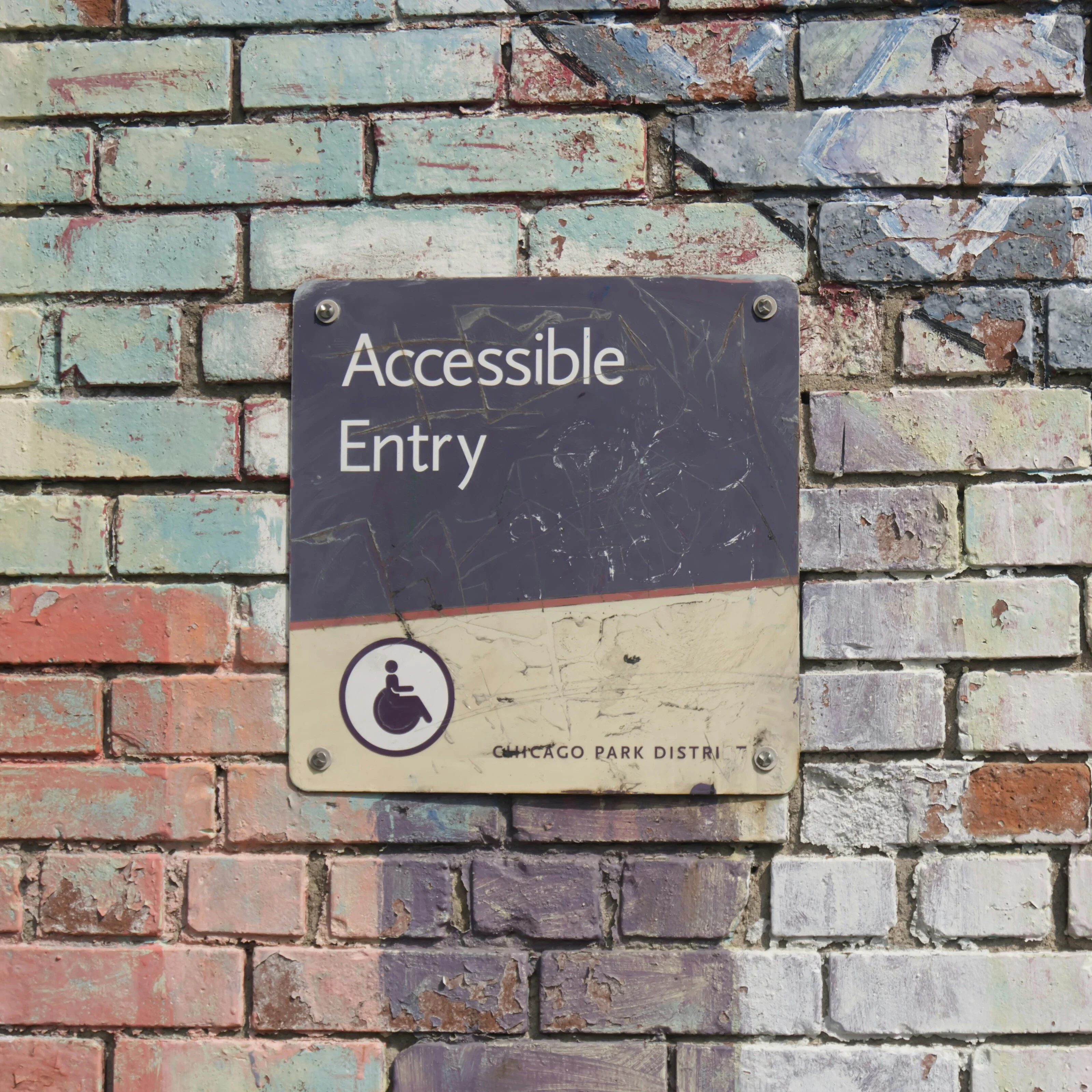
More accessibility in online retail
Since July 2021, the Accessibility Strengthening Act has been an important milestone in German legislation. It aims to improve the accessibility of products and services for people with disabilities.
The purpose of this law is to ensure the accessibility of products and services in accordance with defined regulations in the interests of consumers and users. This strengthens the right of people with disabilities to participate in society.
What does the BFSG say?
The Accessibility Reinforcement Act (BFSG) stipulates that products and services, particularly in e-commerce, must meet certain accessibility requirements from June 28, 2025. This applies not only to physical electronic products, such as computers or smartphones, but also to services that are provided online, such as online stores.
The focus here is on the accessibility of these web channels for people with disabilities and for people with different hearing, mobility, visual and cognitive abilities.
Web accessibility:
Why does it matter?
The requirements of the BFSG aim to ensure that online stores and websites are equally accessible and usable for all people. This means that the sales channel must be designed in such a way that it can be used regardless of hardware, software, language, location or ability. An accessible website enables everyone to perceive, understand, navigate and interact with the website.
It’s not just people with disabilities who benefit — older adults, individuals with temporary or situational limitations, and those using slow internet connections or small screens do too.
Barriers on the web and how they can be overcome
There are various factors that can limit the accessibility of websites. These include texts that are difficult to read, a lack of support for screen readers, insufficient color and font contrasts as well as complicated language or complex sentence structures.
The requirements of the BFSG are intended to overcome such barriers, for example by clearly distinguishing texts from the background, offering alternative formats for non-textual content and making it possible to operate the website without a mouse.
Advantages of accessibility
The accessibility of products and services not only benefits people with disabilities, but also society as a whole. Especially in view of demographic change and an aging population, accessibility is becoming a quality feature and competitive advantage. In addition, meeting the requirements of the BFSG prepares companies for the future, as an expansion of the law’s scope is expected in the coming years.
Overall, the Accessibility Strengthening Act is a significant step towards greater inclusion and equal opportunities in online retail. By meeting the requirements, companies can not only comply with legal obligations, but also tap into new customer groups and position themselves as pioneers in terms of accessibility.erp
What specific requirements does this entail for the websites?




When and to whom does the BFSG apply?
When does the BFSG verpcome into force?
The Accessibility Reinforcement Act (BFSG) will come into force in June 2025 and will regulate numerous products and services that are placed on the market or provided after June 28, 2025.
Who the law applies to: exceptions and exemptions
The Barrierefreiheitsstärkungsgesetz (BFSG) sets important standards for accessibility in online retail. However, there are exceptions: Micro-enterprises with fewer than 10 employees and an annual turnover or balance sheet total of no more than 2 million euros are exempt in accordance with section 2 number 17 BFSG. This also applies to companies for which compliance with the requirements represents a disproportionate burden in accordance with Section 17 BFSG. Business-to-business (B2B) sales channels are also exempt from the scope of the law. Another exception is websites that do not provide e-commerce services and on which no trade is conducted. In the latter case, however, it must be clearly evident that there is no possibility of business transactions through the content presented.
Guide:
For whom is the BFSG relevant?

People with disabilities live in the EU, one in four adults, according to Eurostat estimates.

Accessibility as an opportunity
With our advice, we support you in using the BFSG as an opportunity. Together, we not only meet the necessary requirements, but also develop digital offerings that are accessible and appealing to all users. In this way, we create real added value for your target groups - and design a digital world that works for everyone.
Here are some concrete examples that illustrate how accessibility not only benefits people with disabilities, but also offers added value for all users and companies.



Leading the way with courage
Example: An online store increases the font size and contrast so that people with visual impairments can also easily read the content.
Added value: Customers without visual impairments also benefit from better legibility, especially in poor lighting conditions or on mobile devices.
Optimized navigation not only helps people with screen readers, but also users who find it difficult to navigate online.
Example: A bank app is designed in such a way that all functions are accessible via simple, self-explanatory menus. In addition, the app can be used entirely via keyboard or screen reader.
Added value: Users who find technology difficult (e.g. older people) will find their way around more easily. This reduces dropouts and frustration.
Subtitles for videos support people with hearing impairments, but also anyone who watches videos in noisy environments.
Example: An educational portal adds subtitles and transcripts for all educational videos to include people with hearing impairments.
Added value: Subtitles also help users who watch videos in noisy environments (e.g. on the train) or people who want to grasp content more quickly by reading it instead of listening to it.
Example: A restaurant website is optimized so that it can be operated both via touchscreen and voice control.
Added value: Users with temporary limitations, such as an injured hand, or older people who prefer to use voice control benefit just as much as tech-savvy users who value convenience.
Around 10% of the population live with a disability. Accessible offerings help their customers to reach this target group - and also show older people or users who are not familiar with technology the way to their products.
Example: A travel portal offers accessible PDF documents and clear content that is easily accessible for translation software.
Added value: In addition to people with disabilities, international users who use automatic translations also benefit - this significantly expands the customer base.
Example: A website is made accessible by adding structured headings, alt texts for images and clear link descriptions.
Added value: Search engines such as Google rate these measures positively, which leads to a better ranking in the search results and generates more traffic.
Customers are attaching increasing importance to social responsibility. An accessible offering shows that they are not only thinking about themselves, but also about others.
Example: An e-commerce platform actively communicates that it offers accessible services and emphasizes inclusion as part of its corporate culture.
Added value: Customers - even those without disabilities - appreciate the social responsibility and develop a stronger bond with the brand.
Example: A service provider in the financial sector adapts its website to the requirements of the BFSG before the legal deadline expires.
Added value: In addition to complying with the law, the company avoids potential lawsuits and negative PR - a clear economic advantage.




